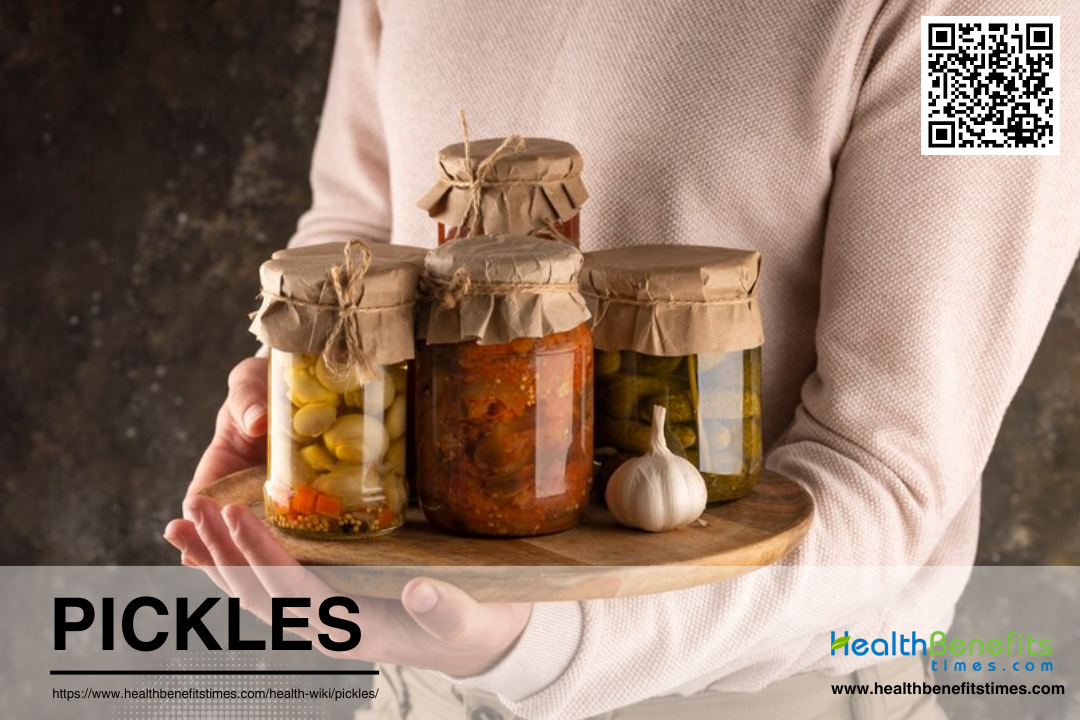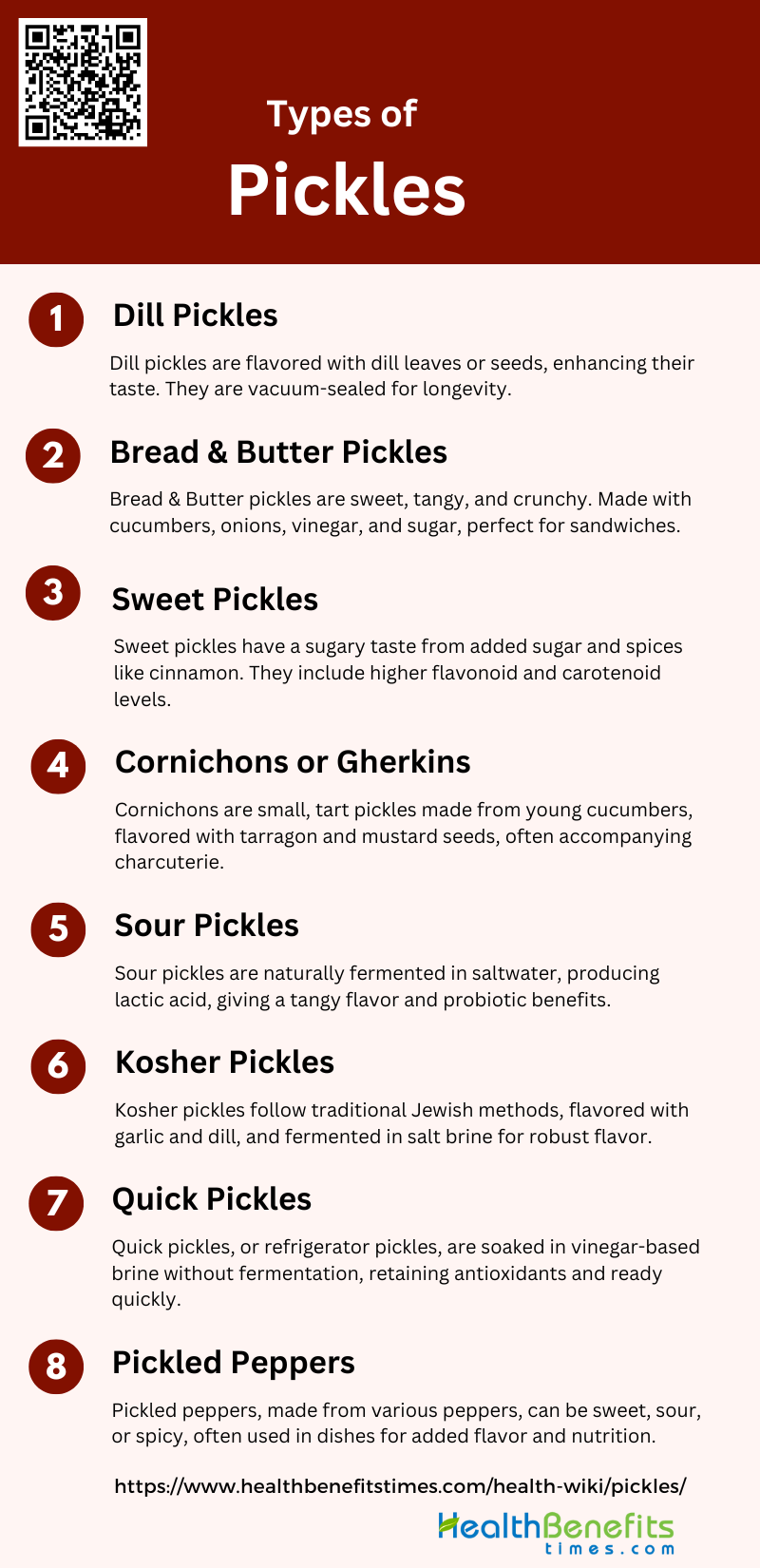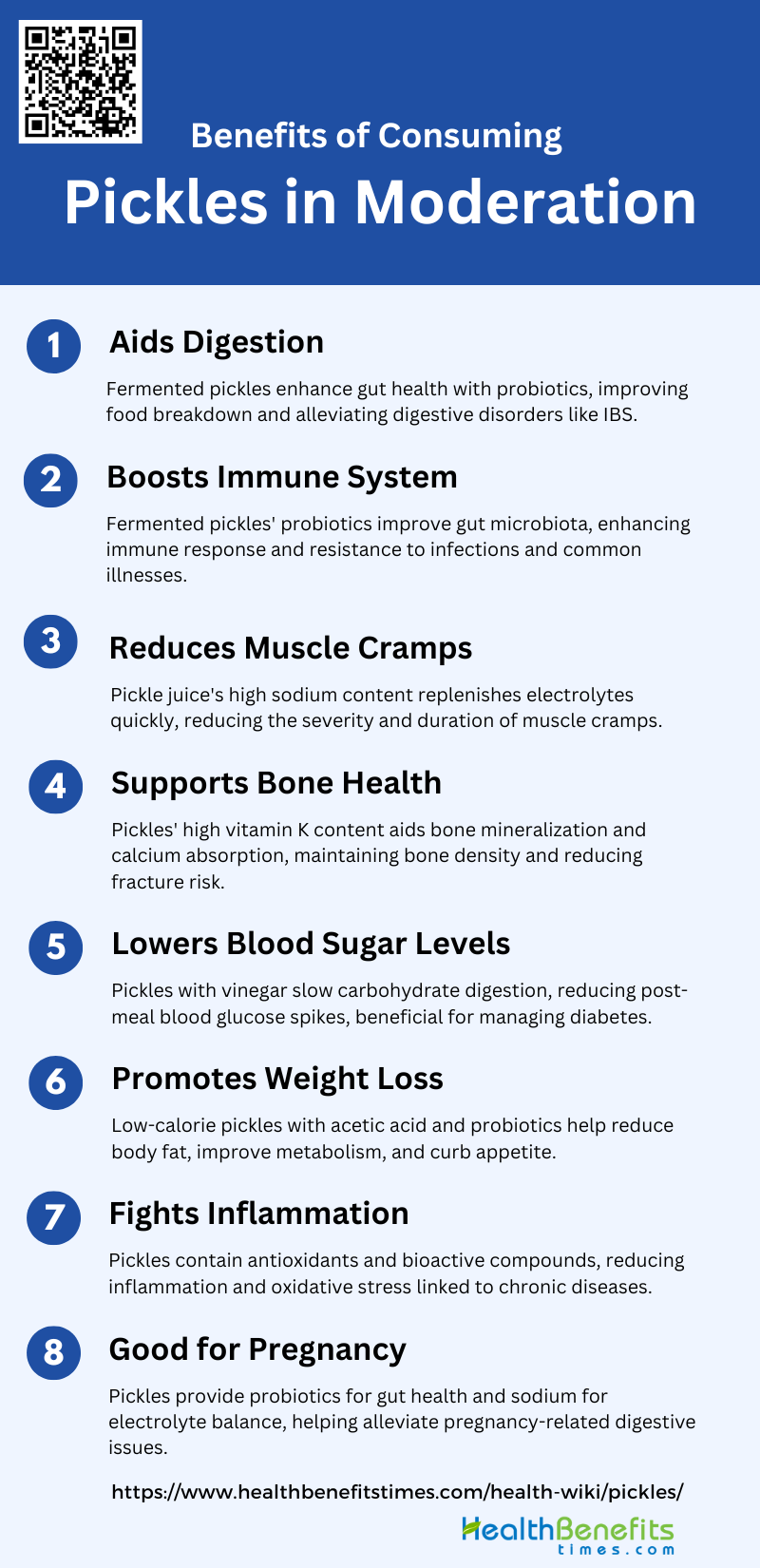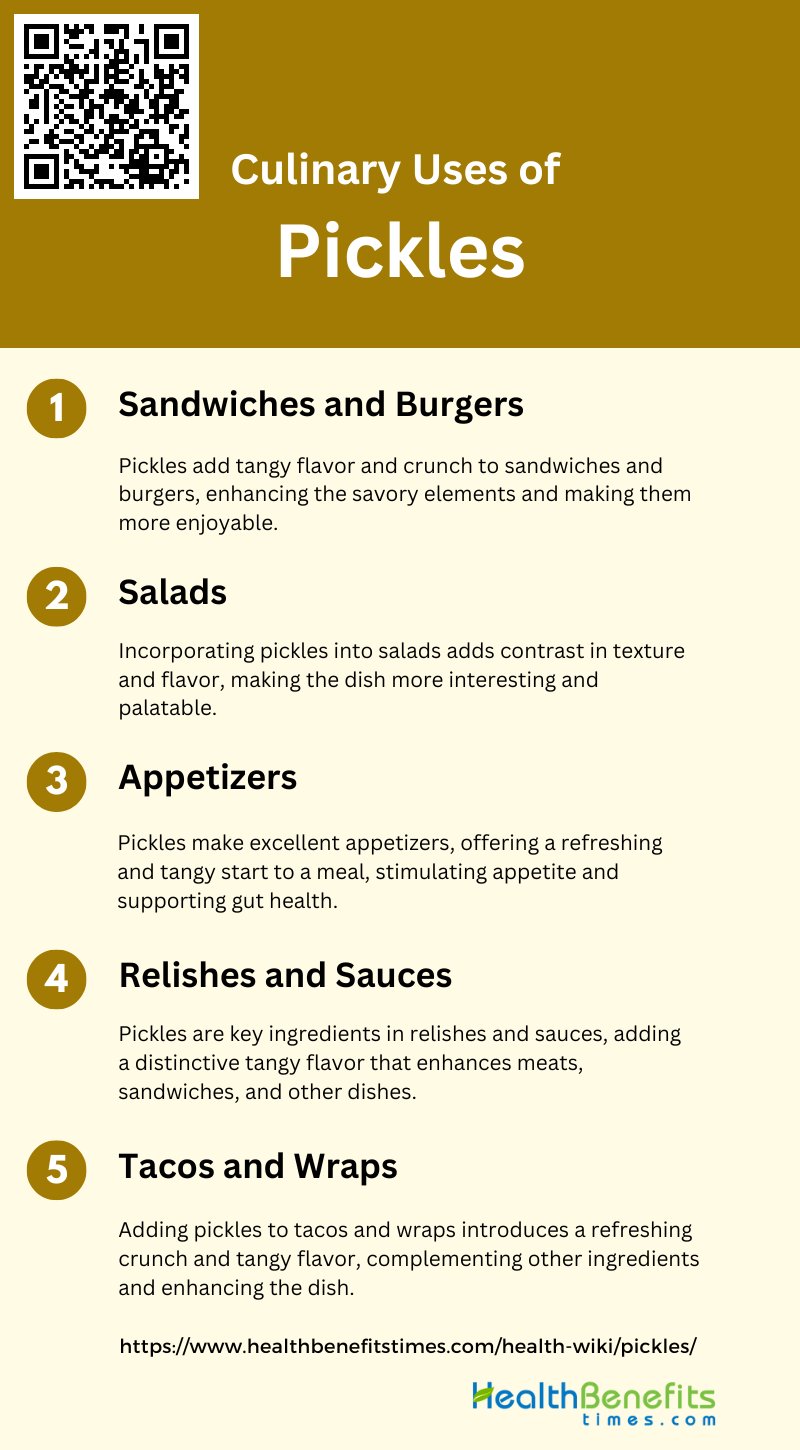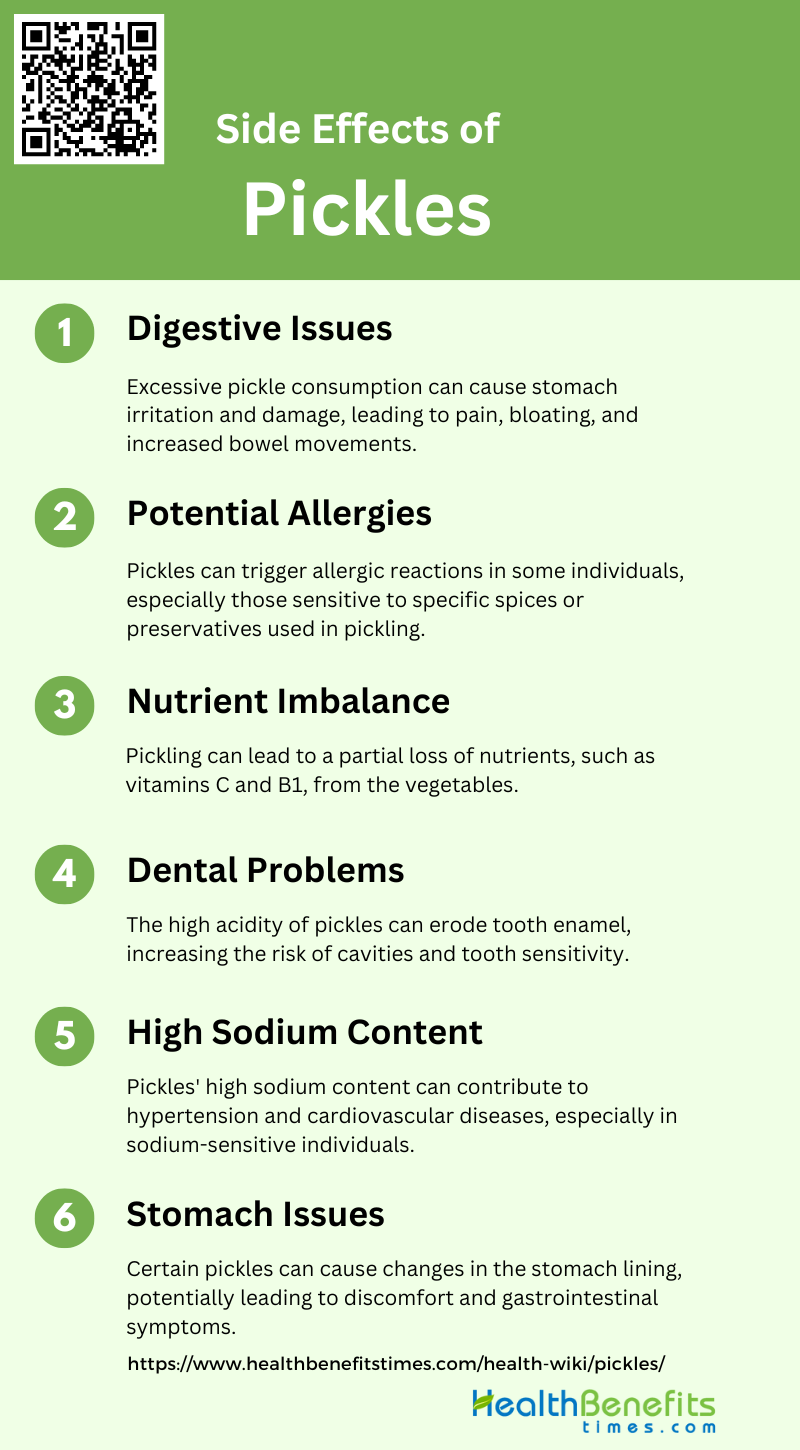Pickles are a type of traditional fermented food that has been used for centuries to preserve various foodstuffs such as vegetables, fruits, fish, and meat. The fermentation process, primarily driven by microorganisms like lactic acid bacteria, yeasts, and filamentous fungi, imparts unique flavors, textures, and colors to the pickles while also enhancing their nutritional and health benefits. The microbial diversity in pickles can vary significantly based on the ingredients and the fermentation environment, which influences the final product’s quality and safety. Pickles can be enriched with beneficial compounds, such as selenium-enriched Lactobacillus, to further enhance their antioxidant properties and reduce harmful substances like nitrites. The use of starter cultures and advanced techniques in pickle production can also improve flavor profiles and sensory preferences, making pickles not only a staple in traditional diets but also a subject of modern food science research.
Types of pickles
Pickles come in various types, each with its unique flavor and preparation method. Here are some common types of pickles:
1. Dill Pickles
Dill pickles are a popular type of pickle known for their distinctive flavor, which comes from the use of dill leaves or seeds. The dill herb (Anethum graveolens) is often combined with other spices to enhance the flavor profile of the pickles. A study on gherkin pickles demonstrated that the use of dill, either fresh or dehydrated, significantly improved the sensory attributes and overall acceptance of the pickles among a panel of tasters. Dill pickles are typically packed in glass jars using aseptic packing technology, which includes vacuum sealing and pasteurization to ensure a longer shelf life and maintain quality.
2. Bread & Butter Pickles
Bread & Butter pickles are sweet and tangy pickles made from cucumbers, onions, and a mixture of vinegar, sugar, and spices. These pickles are often enjoyed as a condiment or snack. The sweetness of Bread & Butter pickles comes from the addition of sugar, which balances the acidity of the vinegar. This type of pickle is known for its crunchy texture and is often used in sandwiches and salads. The pickling process involves soaking the cucumbers in a brine solution, which helps to preserve their firmness and enhance their flavor.
3. Sweet Pickles
Sweet pickles are characterized by their sugary taste, which is achieved by adding a significant amount of sugar to the pickling brine. These pickles are often flavored with spices such as cinnamon, cloves, and allspice. Sweet pickles can be made from various vegetables, including cucumbers and bell peppers. A study comparing the nutritional composition of pickled bell peppers from organic and conventional production found that organic pickled peppers contained higher levels of flavonoids and carotenoids, which are beneficial for health. Sweet pickles are commonly used in relishes and as a garnish for various dishes.
4. Cornichons or Gherkins
Cornichons, also known as gherkins, are small, tart pickles made from young cucumbers. These pickles are typically flavored with tarragon, mustard seeds, and other spices. Gherkins are often used as a condiment or accompaniment to charcuterie and cheese platters. A study on the fermentation of gherkins highlighted the importance of using specific Lactobacillus strains to achieve a desirable fermentation profile, which includes the production of beneficial metabolites and biogenic amines. The fermentation process not only enhances the flavor but also contributes to the safety and nutritional value of the pickles.
5. Sour Pickles
Sour pickles are made through a natural fermentation process that relies on lactic acid bacteria to produce the characteristic sour taste. These pickles are typically brined in a saltwater solution and left to ferment at room temperature. The fermentation process results in the production of lactic acid, which acts as a natural preservative and gives the pickles their tangy flavor. Sour pickles are known for their probiotic benefits, as the fermentation process promotes the growth of beneficial bacteria. Studies have shown that the microbial communities in fermented pickles play a crucial role in determining their quality and safety.
6. Kosher Pickles
Kosher pickles are a type of sour pickle that is traditionally made in accordance with Jewish dietary laws. These pickles are often flavored with garlic and dill and are known for their robust flavor. The term “kosher” in this context refers to the traditional method of pickling rather than the certification of the pickles. Kosher pickles are typically fermented in salt brine, which allows for the growth of lactic acid bacteria. This fermentation process not only enhances the flavor but also contributes to the preservation and safety of the pickles.
7. Quick Pickles
Quick pickles, also known as refrigerator pickles, are made by soaking vegetables in vinegar-based brine without the need for fermentation. These pickles are typically ready to eat within a few hours to a few days and are stored in the refrigerator. Quick pickles are a convenient way to preserve vegetables and add a burst of flavor to meals. The pickling process helps to retain the nutritional value of the vegetables, including their antioxidant properties. A study on the antioxidant activity of pickled vegetables found that the pickling process can help preserve phenolic acids and other bioactive compounds.
8. Pickled Peppers
Pickled peppers are a popular type of pickle made from various types of peppers, including bell peppers, jalapeños, and chili peppers. These pickles can be sweet, sour, or spicy, depending on the type of brine and spices used. Pickled peppers are often used as a condiment or ingredient in various dishes. A study on the nutritional composition of pickled bell peppers found that organic pickled peppers contained higher levels of flavonoids and carotenoids compared to conventional ones, making them a nutritious addition to the diet. Pickled peppers are also known for their vibrant color and crunchy texture.
Methods of pickling
Pickling is a time-honored method of preserving food by immersing it in an acidic solution, typically vinegar or brine. This process not only extends the shelf life of various foods but also enhances their flavors. Here are some common methods of pickling:
1. Vinegar Pickling
Vinegar pickling involves immersing food items in a vinegar solution, which acts as a preservative due to its high acidity. This method is effective in inhibiting the growth of spoilage microorganisms and pathogens. For instance, a study on the preservation of paneer using vinegar pickling demonstrated that the product remained microbiologically stable for up to two months when stored at room temperature. Similarly, vinegar pickling of cucumber slices showed a decrease in pH over time, which helps in maintaining the safety and quality of the pickles. The acetic acid in vinegar not only preserves the food but also imparts a tangy flavor, making it a popular choice for pickling various vegetables and fruits.
2. Brine Pickling
Brine pickling involves soaking food items in a saltwater solution, which creates an environment that is inhospitable to many spoilage organisms. This method is particularly effective for fermenting vegetables, as it promotes the growth of beneficial lactic acid bacteria while inhibiting harmful bacteria. For example, the fermentation of Solanum aethiopicum in a brine solution resulted in a significant increase in lactic acid bacteria, which improved the shelf stability of the product. Additionally, brine pickling of dates at the khalal stage produced an acceptable product without the need for cutting or lye treatment, highlighting the simplicity and effectiveness of this method.
3. Refrigerator Pickling
Refrigerator pickling is a quick and convenient method that involves storing pickled items in the refrigerator rather than fermenting them at room temperature. This method is ideal for those who prefer a faster pickling process and a crisper texture. Although not explicitly covered in the provided papers, refrigerator pickling typically involves using a vinegar or brine solution and can be applied to a variety of vegetables and fruits. The lower temperature slows down the fermentation process, resulting in a milder flavor compared to traditional pickling methods.
4. Fermentation Pickling
Fermentation pickling relies on the natural fermentation process, where beneficial microorganisms convert sugars in the food into lactic acid, which acts as a preservative. This method is one of the oldest and most traditional forms of pickling. The microbial diversity involved in fermentation pickling, including lactic acid bacteria, yeasts, and filamentous fungi, plays a crucial role in the flavor, texture, and safety of the final product. For example, the fermentation of cucumbers in calcium chloride brine was found to be an environmentally friendly alternative to traditional high-salt fermentations, with no significant difference in consumer acceptability. Fermentation pickling not only preserves the food but also enhances its nutritional and therapeutic properties.
5. Hot Pickling
Hot pickling involves heating the pickling solution before adding it to the food items. This method can help in faster penetration of the pickling solution and can be particularly effective for certain types of vegetables. For instance, brining cucumbers in a hot salt solution improved the storage stability and reduced the rate of pH decrease, which is crucial for maintaining the quality of the pickles. Additionally, hot pickling of hard-cooked eggs demonstrated a rapid reduction of pathogenic microorganisms, making it a safe and efficient method for preserving eggs. The heat treatment not only aids in preservation but also enhances the flavor and texture of the pickled items.
Nutritional Value of Pickles
Pickles are a popular condiment known for their tangy flavor and crunchy texture. They offer various nutritional benefits, including being low in calories and rich in vitamins and minerals. Here are some key nutritional aspects of pickles:
- Low in Calories: Pickles are a low-calorie snack, making them a good option for those looking to manage their weight.
- Vitamins: They contain vitamins such as Vitamin K, which is important for blood clotting and bone health.
- Minerals: Pickles provide essential minerals like calcium, iron, and potassium.
- Antioxidants: The cucumbers used in pickles contain antioxidants that help combat free radicals in the body.
- Probiotics: Fermented pickles are rich in probiotics, which are beneficial for gut health and digestion.
Benefits of consuming pickles in moderation
Consuming pickles in moderation can offer several health benefits without the drawbacks of excessive intake. They provide essential nutrients, aid in digestion, and can even help with weight management. Here are some key benefits of eating pickles in moderation:
1. Aids Digestion
Consuming pickles, particularly those that are fermented, can significantly aid digestion. The fermentation process involves lactic acid bacteria, which are known to enhance gut health by promoting the growth of beneficial gut flora. These probiotics help in breaking down food more efficiently and can alleviate symptoms of digestive disorders such as irritable bowel syndrome (IBS). Additionally, the acetic acid in vinegar-based pickles can improve the body’s ability to absorb minerals from food, further aiding the digestive process.
2. Boosts Immune System
Pickles, especially those fermented with lactic acid bacteria, can boost the immune system. The probiotics present in fermented pickles enhance the gut microbiota, which plays a crucial role in the body’s immune response. Studies have shown that these beneficial bacteria can improve the body’s resistance to infections and reduce the incidence of common illnesses. For instance, the consumption of fermented rakkyo pickled juice has been shown to improve immunocompetence in pigs, suggesting similar benefits could be extended to humans.
3. Reduces Muscle Cramps
Pickle juice has been found to be effective in reducing muscle cramps. A randomized controlled trial demonstrated that sips of pickle juice consumed at the onset of cramps significantly improved cramp severity compared to tap water. The high sodium content in pickle juice is believed to help in quickly replenishing electrolytes lost during physical activity, thereby reducing the duration and intensity of muscle cramps.
4. Supports Bone Health
Pickles can support bone health due to their high vitamin K content, which is essential for bone mineralization and blood clotting. Fermented pickles, in particular, contain higher levels of this vitamin, which helps in maintaining bone density and reducing the risk of fractures. Additionally, the probiotics in fermented pickles can improve calcium absorption, further contributing to stronger bones.
5. Lowers Blood Sugar Levels
Pickles, especially those containing vinegar, have been shown to lower blood sugar levels. A study found that consuming frozen pickle juice before a carbohydrate-rich meal significantly reduced postprandial blood glucose levels. The acetic acid in vinegar slows down the digestion of carbohydrates, leading to a more gradual release of glucose into the bloodstream, which can be beneficial for managing diabetes and pre-diabetes conditions.
6. Promotes Weight Loss
Pickles can aid in weight loss due to their low calorie content and the presence of acetic acid, which has been shown to reduce body fat accumulation. A study on obese mice demonstrated that phenolic compounds extracted from pickled radish inhibited lipid accumulation and prevented weight gain. The probiotics in fermented pickles also help in improving metabolism and reducing appetite, making them a good addition to a weight loss diet.
7. Fights Inflammation
The anti-inflammatory properties of pickles can be attributed to the presence of antioxidants and bioactive compounds. For example, lemon pickles contain ingredients like lemons and red chillies, which have been found to have anti-inflammatory effects. Regular consumption of such pickles can help in reducing inflammation and oxidative stress, which are linked to various chronic diseases.
8. Good for Pregnancy
This can alleviate common pregnancy-related digestive issues such as constipation and bloating. Additionally, the high sodium content in pickles can help in managing electrolyte balance, which is crucial during pregnancy. However, it is important to consume them in moderation to avoid excessive sodium intake.
Culinary Uses of Pickles
Pickles are a versatile ingredient that can add a burst of flavor and texture to a variety of dishes. From enhancing simple snacks to elevating gourmet meals, their tangy and crunchy profile makes them a favorite in many cuisines. Here are some popular culinary uses of pickles:
1. Sandwiches and Burgers
The lactic acid bacteria involved in the fermentation process of pickles not only enhance their taste but also contribute to their health benefits, such as maintaining cholesterol levels. The unique combination of salty, sweet, and spicy flavors in pickles can elevate the overall taste profile of sandwiches and burgers, making them more enjoyable and nutritious.
2. Salads
Incorporating pickles into salads can add a delightful contrast in texture and flavor, making the dish more interesting and palatable. The microbial diversity in pickles, including lactic acid bacteria and yeasts, contributes to their unique taste and potential health benefits, such as improved digestion and nutrient absorption. Pickles made from a variety of vegetables, such as cucumbers, carrots, and even pineapples, can introduce different flavors and nutritional benefits to salads, enhancing their overall appeal and healthfulness.
3. Appetizers
Pickles serve as excellent appetizers, offering a refreshing and tangy start to a meal. Their fermentation process, which involves beneficial microorganisms like lactic acid bacteria, not only enhances their flavor but also imparts health benefits, such as probiotic properties that support gut health. Traditional pickles from diverse regions, such as the Himalayas, often come with unique flavors and medicinal values, making them a popular choice for appetizers that can stimulate the appetite and provide a healthy start to the meal.
4. Relishes and Sauces
The fermentation process of pickles, driven by microorganisms like lactic acid bacteria, contributes to their complex flavor profile and potential health benefits, such as cholesterol management. Relishes and sauces made from pickles can be used to complement meats, sandwiches, and other dishes, providing a burst of flavor and a touch of acidity that balances the richness of the main ingredients.
5. Tacos and Wraps
Adding pickles to tacos and wraps can introduce a refreshing crunch and a tangy flavor that complements the other ingredients. The diverse microbial communities involved in the fermentation of pickles, including lactic acid bacteria and yeasts, enhance their taste and offer health benefits, such as improved digestion and probiotic effects. Pickles made from various vegetables and fruits can add different flavors and textures to tacos and wraps, making them more exciting and nutritious. The traditional pickling methods from different cultures can also bring unique flavors to these dishes, enriching the culinary experience.
Side effects of Pickles
While pickles are a tasty and nutritious addition to many diets, consuming them in excess can lead to several health issues. It’s important to be aware of these potential side effects to enjoy pickles safely and in moderation. Here are some common side effects of eating too many pickles:
1. Digestive Issues
Consumption of pickles can lead to various digestive issues. A study examining the histological effects of pickles on the human gastric mucosa found that ingestion of certain types of pickles, such as fukujinzuke and vinegared gherkins, caused significant changes in the surface epithelium and gastric pits. These changes included loss of cellular mucus, nuclear enlargement, and an increased number of mitotic figures, indicating potential irritation and damage to the stomach lining. Additionally, pickles containing Lactobacillus brevis were found to influence bowel symptoms, with some subjects experiencing increased bowel movements and improved symptoms of constipation.
2. Potential Allergies
Research on Pediococcus pentosaceus Sn26, a strain isolated from Japanese fermented vegetable pickles, demonstrated its potential to inhibit IgE production and reduce the occurrence of allergic diarrhea in mice. The study showed that this strain could improve the Th1/Th2 balance and decrease IgE production, thereby ameliorating type-1 allergies. However, individuals with sensitivities to specific ingredients used in pickling, such as certain spices or preservatives, may still experience allergic reactions.
3. Nutrient Imbalance
Pickling can alter the nutrient composition of vegetables. A study on the effect of vinegar pickling on garlic revealed that while polysaccharides and proteins were degraded into more digestible forms, there was a partial transfer of nutrients into the pickle solution, resulting in a loss of 20% to 40% of certain nutrients. Although the overall nutritional value remained relatively high, there was a slight loss of vitamins C and B1. This nutrient imbalance could be a concern for individuals relying heavily on pickles as a dietary staple.
4. Dental Problems
The acidic nature of pickles can pose a risk to dental health. The high acidity can erode tooth enamel, leading to increased sensitivity and a higher risk of cavities. While specific studies on the dental effects of pickles were not provided, it is well-documented that acidic foods and beverages can contribute to enamel erosion. Therefore, frequent consumption of pickles may necessitate additional dental care to mitigate these effects.
5. High Sodium Contents
One of the most significant concerns with pickles is their high sodium content. Excessive sodium intake is associated with various health issues, including hypertension and cardiovascular diseases. While the provided studies did not specifically address sodium content, it is widely recognized that pickling often involves the use of large amounts of salt, which can contribute to these health risks. Individuals with sodium-sensitive conditions should be cautious with their pickle consumption.
6. Stomach Issues
In addition to digestive issues, pickles can cause other stomach-related problems. The study on the histological effects of pickles indicated that certain types of pickles could cause marked changes in the stomach lining, potentially leading to discomfort and other gastrointestinal symptoms. Moreover, the consumption of pickles containing Lactobacillus brevis showed mixed results, with some subjects experiencing improved bowel movements while others did not show significant changes. This variability suggests that pickles may affect individuals differently, potentially exacerbating stomach issues in some cases.


